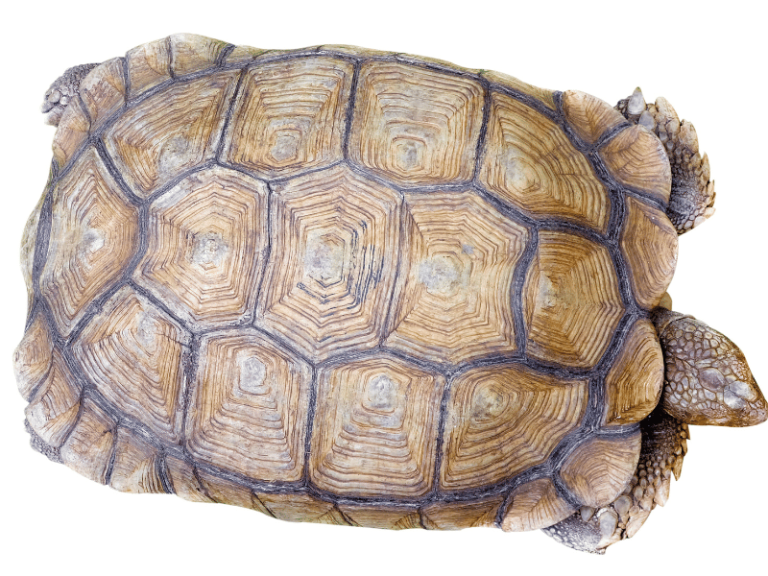Turtles evolved from amphibians and are reptiles. They breathe through lungs and primarily live on land. They are known for their sluggish nature, ability to endure hunger and temperature variations, and their longevity in the animal kingdom. They use their limbs for swimming and crawling on land. Their bodies are flattened and covered with a thick, hard shell resembling stone. The dorsal shell is dark brown or slightly yellow, while the ventral shell is lighter, with some variation in color depending on the species.
This shell serves as their exoskeleton, providing support for body movement, protecting internal organs, and preventing loss of body moisture. When faced with external stimuli, they can retract their head, tail, and limbs into the shell.
The dorsal shell is distinctly divided into three rows, totaling thirteen pieces, called the primary shell. The central row of five pieces is called the vertebral shell, evolved from the vertebral bones. The two rows on each side, totaling eight pieces, are called the costal shell, evolved from symmetrical ribs. The entire shell is composed of keratinized scutes on the skin surface and bony plates in the dermis.
During the late Devonian period in Earth’s history, when the climate became drier and some oceans turned into land, amphibians were forced to live on land. To prevent water loss from their bodies, they gradually developed a primitive shell— the keratin layer—underneath their skin. Environmental changes closely influence organisms, and organisms must adapt to survive in new environments. Through countless rounds of natural selection over the millennia, advantageous traits are preserved, reinforced, and strengthened. Not only does the external appearance change, but internal structures also undergo changes, demonstrating that morphological and physiological changes are consistent. For example, the number of pieces in a turtle’s dorsal shell, specifically the vertebral and costal bones, was not initially the same as it is now. Through the long process of evolution, only this configuration of thirteen pieces was suitable for their needs and thus became fixed and preserved.

